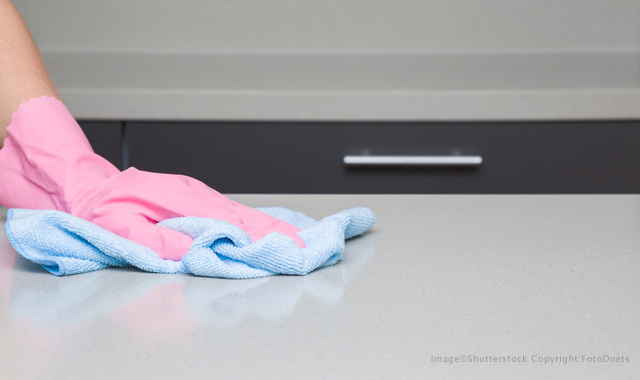How to prevent cross-contamination in the dental office
How to prevent cross-contamination in the dental office

Preventing the spread of infection is a constant duty for dental teams since the risk of cross-contamination begins when the first patient walks through the front door and continues throughout the day, impacting every surface from the pen in the waiting room to the dental chair in the operatory.
Routine and complete surface cleaning and disinfection are vital, especially with the impressive survival rates of potentially harmful pathogens on high-touch surfaces present in dental facilities. Influenza viruses can survive on hard surfaces for up to 48 hours, while viral particles of the highly-contagious norovirus can live on surfaces for days, and those of methicillin-resistant Staphylococcus aureus (MRSA) can even survive on surfaces anywhere from seven days to seven months.1
With almost 80 percent of infectious diseases being spread by touch2, the opportunities for cross-contamination between the surfaces of the physical environment and the patients and staff interacting with these settings are boundless. While dental operatories are often thought of as the primary area of concern, research in dental offices has shown that surfaces inside and outside of the dental operatory can be contaminated with bacteria. One study found that nearly three-quarters of patient and dentist chairs and a quarter of reception-area countertops across 11 offices were contaminated with E. coli.3
Keeping those surfaces clean and disinfected comes down to two important elements: selecting and using the right products and making sure cleaning and disinfection protocols are implemented properly.
Selecting the right products
When selecting a surface disinfectant, look for Environmental Protection Agency (EPA) registered cleaner-disinfectants that are ready to use and those with short contact times to facilitate faster room turnovers. Products that allow for one-step cleaning and disinfection, such as Clorox Healthcare® Hydrogen Peroxide Cleaner Disinfectants, which have 30 seconds to one-minute disinfection contact times on most bacteria and viruses, and have been shown to effectively reduce bacteria commonly found in dental offices, including MRSA3, ensure greater compliance from users and save teams time and energy without sacrificing efficacy.
Dental facilities also frequently face the costly tradeoff between efficacy and surface compatibility when it comes to selecting surface disinfectants. Frequent use of incompatible disinfectants on surfaces could lead to equipment and surface damage, impacting esthetics and even forcing facilities to purchase replacements. Identifying the surface materials present in the facility and contacting the manufacturers directly to determine which disinfectants are compatible are key steps in ensuring the selected disinfecting products are surface compatible. Healthcare disinfectants such as the Clorox Healthcare® Fuzion™ Cleaner Disinfectant aim to help eliminate this problem, offering broad surface compatibility with the plastics and stainless steel, among other materials, commonly found in dental facilities.
Ensuring proper surface disinfectant usage
Cleaning and disinfection happen throughout the entire facility - from the reception area to the operatory to the instrument reprocessing areas. It’s important to educate all staff involved in the cleaning and disinfection process on how and where to use each product. Secondly, teach team members how to navigate product labels that contain safety information, directions for use, disinfection claims and contact times, key surfaces and use sites, and storage instructions.
To ensure all team members are properly equipped with the right materials and the knowledge to help protect patients and staff from these infectious diseases, be sure to regularly review regulations and infection control guidelines. Educate the team on the Occupational Safety and Health Administration (OSHA) Bloodborne Pathogens Standard and the Centers for Disease Control and Prevention (CDC) Infection Prevention Checklist for Dental Settings. Establish clear roles and responsibilities and review the basics of proper hand hygiene in the effort to build a robust infection control protocol.
Remember, if not implemented correctly, even the best products and protocols will not be effective against the harmful pathogens, bacteria and viruses that lurk on the high-touch surfaces of waiting and treatment rooms. Dental facilities should also consider investing in continuing education (CE) training through sites like Viva Learning, which offer CE courses for free. Teams should also regularly refer to the resources offered by OSHA and the CDC for the most up-to-date infection prevention and control guidelines and resources for dental settings.
References
1. Kramer A, Schewbke I, Kampf G. How long do nosocomial pathogens persist on inanimate surfaces? A systematic review. BMC Infect Dis. 2006;6:130.
2. Tierno, P. The Secret Life of Germs. New York, NY USA. Aurora Books 2006.
3. Gerba CP et al. Distribution of Bacteria in Dental Offices and the Impact of Hydrogen Peroxide Disinfecting Wipes. J. Dental Hygiene. 2016;90(6):354 361